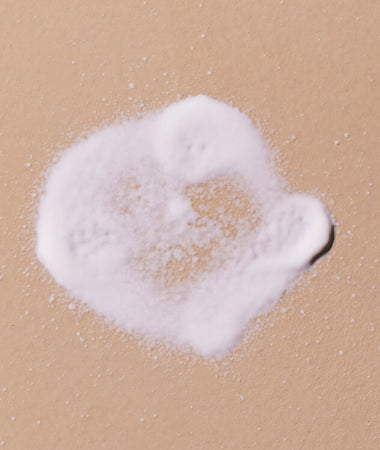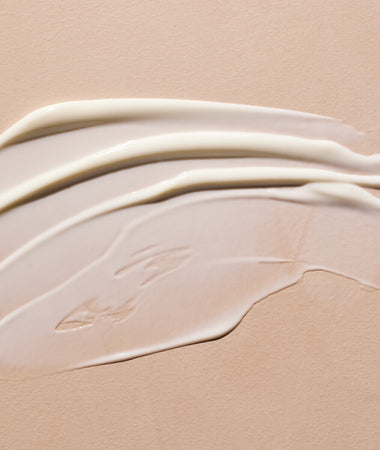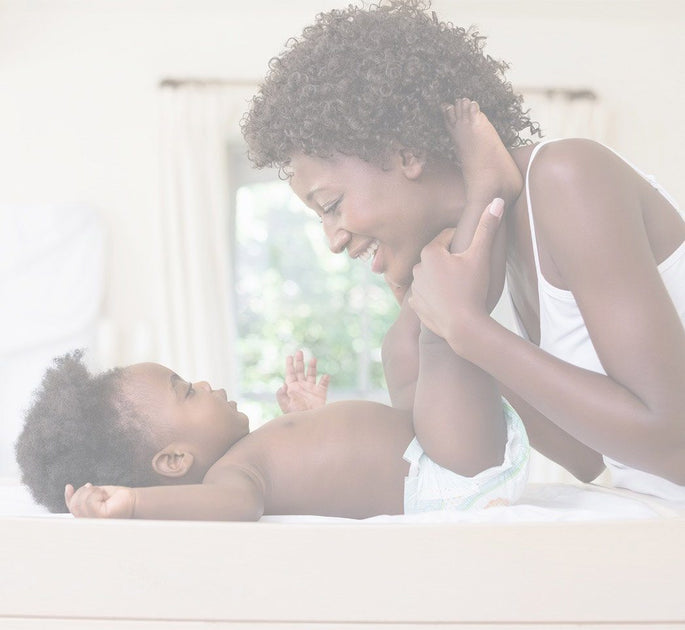
Yeast Diaper Rash: Causes, Symptoms, And Treatment
Diapers and tiny baby bottoms are part of a parent’s daily life. Unfortunately, diaper rash can be quite common, too. However, there’s a difference between a regular diaper rash and a yeast infection diaper rash. If you think your baby might have the latter, this article is for you.
We’ll discuss what causes a yeast diaper rash as well as what symptoms to look for. We’ll also share tips for treating this specific type of rash.
But before we dive in, let’s talk about exactly what this yeast diaper rash is and how it differs from other diaper rashes.
Table Of Contents
- What Is A Yeast Diaper Rash?
- Causes Of Yeast Diaper Rash
- Yeast Diaper Rash Symptoms
- How Long Will Treatment Take?
- Do Yeast Diaper Rashes Hurt?
- Possible Complications
- Other Potential Culprits Of Your Baby’s Rash
- Treating Your Baby’s Yeast Diaper Rash
- Post-Rash Care
- Preventing Yeast Diaper Rashes From Returning
What Is A Yeast Diaper Rash?

Diaper rash is not all that unusual. In fact, run-of-the-mill diaper rash (dermatitis) is caused simply by irritation. However, this average diaper rash is different from a yeast diaper rash.
Yeast (Candida) is a type of fungus that occurs naturally in the human body. But when growth is out of control, it creates what we call a “yeast infection.”
That yeast overgrowth is exactly what causes a yeast infection diaper rash (or just “yeast diaper rash”). It is, simply put, a fungal infection.
Because yeast thrives in warm, moist environments, it’s no surprise that a yeast diaper rash can quickly crop up. Let’s take a look at what causes a yeast diaper rash and what factors leave your baby’s skin susceptible.
Causes Of Yeast Diaper Rash
The cause of a yeast diaper rash is simple and what we just mentioned in the section above: an overgrowth of yeast. Here are some factors that can contribute or lead to a yeast overgrowth.
A Moist Environment
As we mentioned, yeast loves warm, moist environments, and your baby’s diaper area is just that — especially in the folds of their skin.
A Regular Diaper Rash
Unfortunately, if your little one has a regular diaper rash, it means their skin is already irritated, compromised, and susceptible to a yeast diaper rash. That's because their natural skin barrier is weakened and isn't as well-equipped to keep the yeast at bay.
Antibiotics
Antibiotics are a marvel of modern medicine.
But, while they can do away with bacteria that may be making you or your baby sick, antibiotics can also alter the good bacteria in the body. Sometimes, a change in good bacteria gives yeast the chance to grow.
This means that babies who are on antibiotics may be more likely to develop a yeast diaper rash. The same is true for breastfeeding babies if their mom is taking antibiotics.
Thrush
Thrush is in the mouth and may seem like it has nothing to do with a diaper rash, but it does!
Since thrush is also a yeast infection, the yeast can go in one end and out the other (if you know what we mean). That means it can end up in your baby’s diaper and on their bum.
So, if your baby recently or currently has thrush, it won’t be surprising if they also develop a yeast diaper rash.
Frequent Bowel Movements
If your baby’s got to go, they’ve got to go. But frequent bowel movements mean more chances for a yeast diaper rash.
That’s because the stool itself can affect the balance of bacteria on the skin. It can also cause irritation, which, as we know, makes it easier for yeast to take over.
Babies who recently had a bout of diarrhea are particularly prone to a yeast diaper rash.
Now that you know what causes and contributes to a yeast diaper rash’s development, let’s look at what you should be watching out for. Identifying the signs and symptoms will help you determine if your baby has this type of rash or something else entirely.
Yeast Infection Diaper Rash Symptoms

What does a yeast diaper rash look like? Ingrid Polcari MD, FAAP writes this for the American Academy of Pediatrics:
“Clues that the rash might be due to a yeast infection include shiny, bright red or pink patches with sharp edges. This rash may also have little pink bumps or pimples. In severe cases, there may be sores or cracking skin that oozes or bleeds. Unlike with irritant diaper rash, a yeast diaper rash is usually worse in the groin folds.”
In addition, a yeast diaper rash is typically well-defined and may be slightly raised on the edges. It can also have “satellite” rashes near the main rash.
And, of course, one of the clues will be that it doesn’t go away when you treat it as you would a regular diaper rash.
To help you determine which type of rash you’re dealing with, here’s a quick look at the main differences between the two.
Yeast Diaper Rash Vs. Regular Diaper Rash

Baby with normal diaper rash
Color
Yeast diaper rashes are usually bright red or pink. On the other hand, normal diaper rashes often have a more flushed appearance and can be darker in color.
Location
If the redness is worse in the folds of skin near the groin, it's likely a yeast diaper rash. An everyday, irritant-caused rash is most often found on the chubby parts of the bum.
In addition, yeast rashes may have several smaller spots throughout the diaper area. A plain rash is usually found in one larger area without the "satellite" patches.
Texture
Bumpy, cracked, or oozy skin indicates yeast is causing the rash. In addition, the red patches may have a shiny appearance. Conversely, regular rashes are usually smoother and look dry.
Treatment
Yeast diaper rashes won’t respond to a regular diaper rash cream. If the rash lasts longer than three days and isn’t getting better with your home treatments, it’s likely caused by yeast.
How Long Will Treatment Take?
The length of time it takes to treat a yeast diaper rash will depend on the severity of your little one’s rash and how quickly you start treating it.
Once you begin using an antifungal cream, a yeast diaper rash usually takes anywhere from a few days to three weeks to fully clear up. Keep in mind the redness may go away during the healing process before the yeast overgrowth is taken care of.
So don't stop using the medication as soon as the rash is gone. Keep applying the cream as directed until the entire course of treatment is complete. This way, you minimize the chances of the condition coming back.
If your baby's bum isn't improving after a few days, it's best to check back in with their doctor for a reevaluation.
Do Yeast Diaper Rashes Hurt?
Yeast diaper rashes look awful, but they are often more itchy and uncomfortable than painful.
However, you may notice your baby trying to scratch their bum or rub it against something. They may also be extra fussy or irritable during diaper changes. This is normal, and it happens because you're moving and wiping an area that's not feeling so great.
If your baby seems to be in genuine pain, contact their doctor as soon as possible. They can recommend additional ways to help your child feel better.
Possible Complications
Left untreated, the rash might ooze, become more painful, and spread. It can also become infected, especially if your baby scratches the rash and causes more open sores.
Keep your eyes peeled for any signs of infection, like a red streak around the rash or a fever. These symptoms could indicate something more serious is going on that’ll require different treatment.
Other Potential Culprits Of Your Baby’s Rash
Diaper rashes aren’t the only skin condition that can cause angry red patches to appear on your child’s bottom. Here are two other potential causes:
Bacterial Infection
Impetigo or another bacteria-related infection can cause red, itchy bumps on your baby’s bum. If your child has any raised, fluid-filled areas or crusted-over lesions, take them to the doctor right away.
Psoriasis
People with psoriasis can develop red, scaly patches of skin anywhere on their body, including in the diaper region. Studies show that up to 30% of patients notice psoriasis in this part of their body first.
If you see any of the classic signs of psoriasis, such as dry, patchy skin or silver-colored scales, on your baby’s bottom near the diaper line, schedule an appointment with their doctor for a definitive diagnosis. They may need steroids or hydrocortisone cream to help clear up their skin.
Now that you know more about this type of rash, that brings us to the final (but arguably most important) part of this article: how to treat your baby’s yeast diaper rash.
Treating Your Baby’s Yeast Diaper Rash

First of all, if your baby has a diaper rash that just won’t go away, it’s a good idea to speak with their pediatrician — especially if the rash starts looking questionable or your little one has a fever.
If your baby does have a yeast diaper rash, the doctor will be able to confirm that and recommend treatment.
As soothing as regular diaper cream is, it doesn’t get rid of yeast. You’ll need an antifungal cream, and your pediatrician can advise you about this and prescribe a cream if necessary.
In addition to the cream, it’s essential to help your baby’s skin along as it heals. Below, we’ll list several ways to care for your baby’s bum that can help kick a yeast diaper rash.
But keep in mind that these are also good habits to get into to help prevent diaper rash in the first place!
Change Your Baby Frequently
Because yeast grows in moist environments, you’ll want to change your baby’s diaper frequently so they are in a dry diaper as much as possible. Get in the habit of checking their diaper regularly and changing it as soon as possible when it’s wet or soiled.
Clean Skin Thoroughly (But Gently!)
When you change your baby’s diaper, it’s important to clean their skin thoroughly but ever-so-gently. Use an extra-soft washcloth with warm water or damp cotton balls to clean the area.
If you prefer to use baby wipes, opt for natural, fragrance-free wipes that are designed for extra-sensitive skin.
Mustela Certified Organic Water Wipes are ultra-soft, fragrance-free, and created to effectively and carefully clean very sensitive, rashy, or reactive skin.
Plus, they’re made of 99% plant-based ingredients and EWG Verified, so you can feel good about what you put on your little one’s delicate skin.
Air Dry
Instead of rubbing your baby’s bum dry and adding to the irritation, opt for air drying. When using this method, just be sure that their skin is dry before diapering them again.
If you’re in a rush, try a hairdryer on the cool setting. But always test the air on your skin first, as it can be too hot for your baby’s delicate bottom.
Skip The Diaper
Whether it’s after a diaper change to help dry their skin or in the middle of the day when you’re at home, it’s always a good idea to skip the diaper and let your baby hang out in their birthday suit for a while.
Just remember to put your little one somewhere that’s easy to clean up in case nature calls! A plush towel works well for absorbing any accidents. It also gives your little one a soft place to rest while they enjoy some fresh air on their bottom.
Loosen The Diaper

When you fasten your baby’s diaper too tightly, the rubbing can irritate their skin, but that’s only one of the problems. A tight diaper also keeps moisture in, which is exactly what you don’t want when dealing with yeast.
To prevent this, ensure you’re not fastening their diaper too tightly. It should be snug enough to stay in place but not so tight that it's leaving marks or red spots on their skin.
Go Up A Diaper Size
Speaking of tight diapers, if the one your baby is wearing seems to be a bit snug, try going up a size. It’s always best for your little one to have a diaper that fits properly, but it’s even more important when they have any kind of diaper rash.
You should be able to run two fingers under the diaper's waistband once it's on. If you can’t, it’s time to go up a size.
Properly Clean Cloth Diapers
If you use cloth diapers instead of disposables, the material can hang onto yeast for a long time. Your regular washing routine may not be enough to get rid of it. Unfortunately, this means you'll be reinfecting your little one each time you put a diaper on them.
To kill the yeast from your diapers, you'll want to let them soak for 30 minutes in a cold, diluted bleach water solution. Then, rinse them in hot water before you wash them.
You should then hang your diapers out to dry so the UV rays from the sun can further eliminate any yeast buildup.
Because the risk of reinfection is high, many parents choose to put their baby in disposables for the duration of their yeast diaper rash. This way, they don’t worry about infecting their entire stash of cloth diapers.
Wash Your Hands
This is a good rule of thumb for any diaper change, but, when dealing with a yeast diaper rash, be sure to clean your hands before and after changing your baby’s diaper. Use soap and hot water to wash, and scrub your hands for at least 20 seconds.
This helps prevent the continuous spread of yeast to you and your baby. Since this condition is contagious, you can get a yeast infection if you don’t use proper hygiene.
Use Gentle Skincare Products
A baby’s skin is often sensitive to lotions, creams, shampoos, and other skincare products. But if your baby has problematic skin or is dealing with a rash, you’ll want to be extra careful with the products you use on them.
Bathe your baby with a soap designed especially for delicate skin, like our Soothing Cleansing Gel. This EWG Verified product effectively cleans your baby’s hair and body while soothing their skin. And it’s designed with sensitive, rashy skin in mind.
Post-Rash Care

Once your baby’s rash is gone, you can ditch the antifungal cream. However, the rest of these tips are still good practices to stick with to help keep your baby’s skin clean and healthy.
Plus, it’s important to get in the habit of using a soothing, protecting diaper cream every day. We recommend either our Diaper Rash Cream 1 2 3 or Diaper Cream with Olive Oil and Aloe.
Diaper Cream with Olive Oil and Aloe is a talc-free formula that calms your baby’s bottom and leaves a moisturizing layer on their skin to soothe and diminish redness at every diaper change. With organic olive oil and aloe vera, it's safe for even the most sensitive skin.
Preventing Yeast Diaper Rashes From Returning
Yeast can be hard to get rid of. And if you don't completely eliminate it, the rash may come back.
To make sure your baby's bum stays yeast-free, keep these tips in mind:
- Treat any yeast infections you may have. Otherwise, you risk passing it back to your baby.
- If your baby is eating solid foods, yogurt is an excellent source of probiotics that can help keep yeast levels in check.
- Talk to your baby’s doctor about probiotic supplementation.
- Rub a bit of coconut oil on your baby's bum. The antifungal properties can help kill yeast overgrowth.
- Minimize sugar intake for your baby and yourself if you're breastfeeding. Yeast feeds on sugar.
- If your baby has to take antibiotics, increase their diaper-free time to get more air circulating down there.
- Clean your baby well during each diaper change. Make sure you get all of the stool off their delicate skin.
- Switch to gentle skincare products from Mustela to keep your baby’s skin soft and supple.
While you may not be able to completely prevent yeast diaper rashes from coming back, these steps make it less likely for a reoccurrence to happen.
Careful Care For Baby’s Bum
While diaper rash is common, it’s still uncomfortable for your little one! And if it’s a yeast diaper rash, you’ll need to treat it a little differently.
In addition to speaking with your doctor and following their advice about antifungal cream, care for your baby’s bum and rash with the tips we mentioned in this article.
When you change your baby (which should be frequently), clean their skin with Soothing Cleansing Wipes, let their bottom air dry, and put their diaper on a little bit more loosely.
Finally, when your baby’s yeast rash is all gone, do what you can to prevent future diaper rash with a cream like our Diaper Rash Cream 1 2 3 or Diaper Cream with Olive Oil and Aloe.
While you certainly can’t guarantee that your baby will never get a diaper rash, with careful care for your baby’s bum, you can reduce the chances and keep your little one happy and comfortable!
- reg.
- $14.00
- Sale price
-
$14.00
- reg.
-
reg.
- Unit price
- /per
Suggested Articles
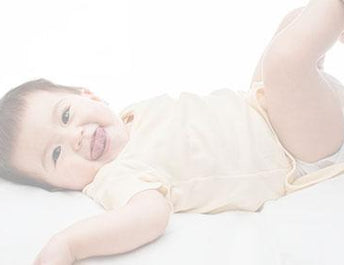
Diaper Changing: Cleaning Your Baby's Bottom

What's in My Diaper Bag?
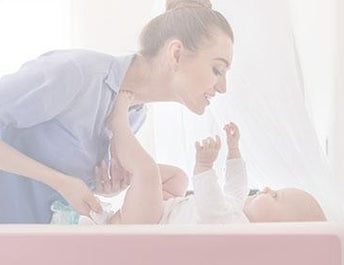
How to Change a Diaper: A Step-By Step Guide
Get tips, news
and exclusive offers





